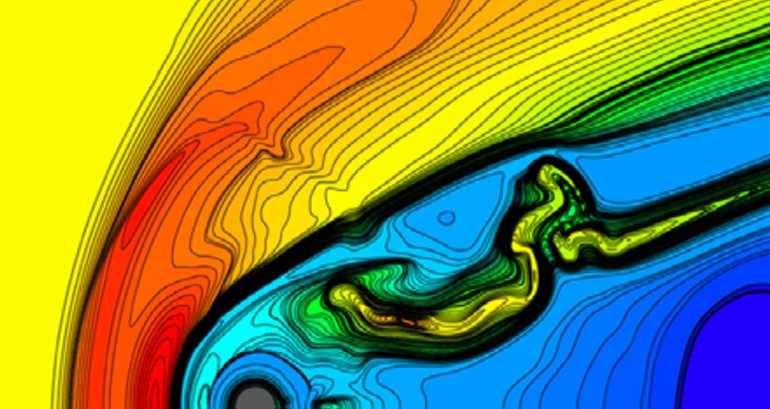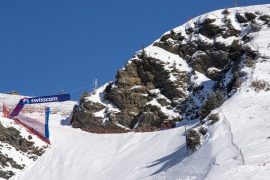Deformed protective shell: Researchers have found a possible reason for the unusual shape of the heliosphere – the protective plasma bubble that surrounds our solar system. According to this, the influx of neutral hydrogen from interstellar space causes turbulence that disrupts the flow of plasma. Instead of a neat tail shape or a round ball, the heliosphere is shaped like a croissant, as simulations suggest.
The solar wind and magnetic field of our home star form a protective bubble around our solar system. This heliosphere protects us from high-energy, interstellar particle streams. For a long time, astronomers assumed that this protective bubble was drawn into a long plasma tail of thousands of astronomical units. But measurement data from space probes and new models cast doubt on this picture.

Round, deformed or with a tail?
“There is currently an active debate going on about the shape and composition of the heliosphere and its tail,” explained Merav Ofer of Boston University and colleagues. While their model suggests a strongly distorted, croissant-like structure for the heliosphere based on the data, others assume a more rounded shape. The deciding factor for the actual size is the question of how far interstellar particle flux can penetrate the heliosphere and affect its tail.
In search of an answer, Victims and his team looked to heliosphere jets – an important basic component of the heliosphere. These streams of particles and magnetic field lines emanating from the Sun’s poles are essential to the shape of the protective plasma bubble. So the scientists used a model simulation to analyze the factors causing instability in these jets.
neutral hydrogen is important
The simulations revealed something surprising: the heliospheric jets remained stable under almost all conditions. The heliosphere then formed a long and straight tail like a comet. But as the flow of neutral hydrogen atoms from interstellar space was programmed, the picture changed: “The central axis began to wobble and that meant something very unstable in the jet,” Ofer explains.
Under the influence of this neutral particle flow, the previously straight jets deform and curve. As a result, charged interstellar particles can now enter the resulting gap and trigger further turbulence. “We show that the driving force behind this disturbance is the Rayleigh–Taylor instability,” explained the researchers. This instability occurs when media of different densities collide – in this case neutral hydrogen atoms and charged particles of the solar wind.
Explanation for the deformed structure
“This result is a major breakthrough because it explains why our model gives an apparent croissant shape for the heliosphere and other models do not,” Ofer says. Only when the flow of neutral hydrogen is taken into account does this form occur. This fits with new measurement data, according to which the density of neutral hydrogen at the edge of the heliosphere is 40 percent higher than long-estimated.
According to this, more of these neutral atoms enter the heliosphere than in some models – and this could confirm the deformation of the protective shield determined by Opper and his team. At the same time, new modeling shows that turbulence also causes ionized interstellar particles to enter the heliosphere and mix with the solar wind. Conversely, instabilities also carry solar material into the local interstellar environment. (The Astrophysical Journal, 2021; doi: 10.3847 / 1538-4357 / ac2d2e,
Them: Boston University

Web guru. Amateur thinker. Unapologetic problem solver. Zombie expert. Hipster-friendly travel geek. Social mediaholic.





